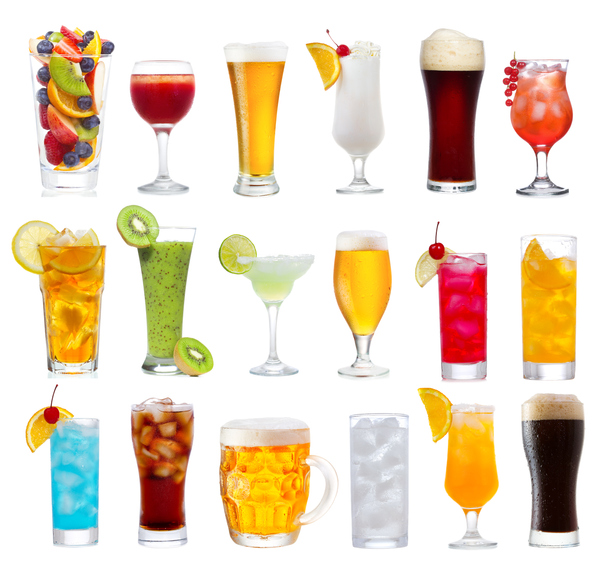Everybody knows that staying hydrated is important, not only to athletes and their performance, but also to the general public and overall health.
Improper or insufficient hydration during intense exercise can lead to life-threatening medical problems like heat exhaustion, heat stroke and hyponutremia (low levels of electrolytes).
So why is something as simple as replacing fluids so complicated? One cause is the overwhelming number of choices in your local supermarket or convenience store. When you go beyond the basics like milk, orange juice and water, the sometimes-lengthy ingredients list in many of these products can be confusing or daunting to those without a science degree.
After over 30 years of studying sports medicine and nutrition, and reading everything I can find in trusted, unbiased publications like Nutrition Action Newsletter (by the Center for Science in the Public Interest, or CSPI), Consumer Reports and the weekly Washington Post Health & Science section, it is my opinion that the vast majority of fluid-replacement choices offered in the supermarket are either unhealthy, unproductive to athletic performance, overpriced or all of the above.
There are countless fluid replacement choices: bottled water, milk, fruit juices, sports drinks, energy drinks, water additives, fruit and vegetable juice combinations, beer, wine, coffee, tea, sodas and diet drinks. Some fruits and vegetables can also be significant sources of fluids for the body, in particular watermelon, cantaloupe, bananas, oranges and apples.
Find out how to make the best choices for fluid replacement this summer. Get familiar with my two basic principles to help you navigate how to stay hydrated. Discover what to avoid and my picks for best hydration options.
Basic Principles to Staying Hydrated
Learn to Read Labels
Always read the ingredients lists of everything you buy, and learn about food additives. A great source for education about food additives is the Center for Science in the Public Interest. They provide an extensive list of food additives rated as safe, caution, cut back, certain people should avoid, and avoid.
Artificial Means Just That
Not Real. Don’t buy anything that has artificial colors, artificial sweeteners or artificial flavorings, all indications that the product is of inferior nutritional value. In terms of artificial sweeteners -“diet” products-, avoid all of them, including stevia, saccharin, aspartame, acesulfame-K, sucralose and cyclamate, although CSPI considers sucralose a safe product. In regards to artificial colors, I never buy any product with these synthetic chemicals added, and see no valid reason for their use. CSPI considers all artificial colors as either dangerous, or to be avoided. Artificial flavorings are the least problematic, as vanillin or ethyl vanillin is safe (a substitute for natural vanilla), and many other artificial flavorings are based on the real substance, but being flavored with real food is better.
Worst Choices for Hydration
Sports Drinks
Since many people think of sports drinks first when they consider staying hydrated, those will be my first consideration. I do not recommend any of the commercial sports drinks, including the Gatorade “G Series” products and the Powerade products. The main ingredients in “G” are water, sucrose, dextrose, citric acid, sodium, sodium citrate and monopotassium phosphate. It’s water and sugar with citric acid and some electrolytes, but with more sodium than potassium—three times more—when the opposite is better. Citric acid has been implicated in dental decay and the wearing down of tooth enamel. But the worst ingredients in the “G” products are the artificial colors. Powerade has a better formulation, with water, high fructose corn syrup (itself controversial), citric acid, salt, potassium citrate, magnesium chloride, calcium chloride and potassium phosphate as the main ingredients. Adding magnesium and calcium is good, but the sodium-to-potassium ratio is still too high (4 to 1), and most have artificial coloring. The best of the bunch is the Powerade White Cherry version (no coloring), but that still has substances like sucrose acetate isobutyrate, medium chain triglycerides and modified food starch.
Energy Drinks
Do not buy these. Drinks like Red Bull, Monster and 5-Hour Energy are just expensive sources of caffeine—with dubious added ingredients—and some are dangerous, with fatalities reported from use.
Top Picks to Stay Hydrated
- 1% milk (goes great with bananas for post-exercise refreshment)
- 1% milk chocolate soy milk combination
- Water (try these versions if you find plain water too boring).
- Beer in moderation
- 100% fruit juice (including orange juice or grape juice)
- 100% fruit juice combinations (Old Orchard, Trader Joes, Welch’s)
- Low-salt V-8 vegetable juice
- 100% fruit-vegetable combinations (V-8 Fusion, Tropicana Farmstand), but not “fruit drinks” or “fruit cocktails,” which are nutritionally inferior.
Updated June 27, 2019 – Originally Published June 1, 2013

